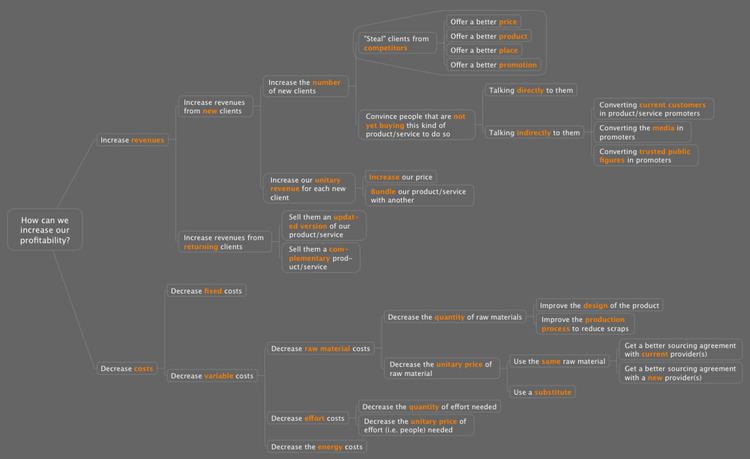 | ||
An issue tree, also called "logic tree" or "issue map", is a graphical breakdown of a question that dissects it into its different components vertically and that progresses into details as it reads to the right.
Issue trees are useful in problem solving to identify the root causes of a problem as well as to identify its potential solutions. They also provide a reference point to see how each piece fits into the whole picture of a problem.
There are two types of issue trees: diagnostic ones and solution ones.
Diagnostic trees breakdown a "why" key question, identifying all the possible root causes for the problem. Solution tree breakdown a "how" key question, identifying all the possible alternatives to fix the problem.
To be effective, an issue tree needs to obey four basic rules:
- Consistently answer a “why” or a “how” question
- Progress from the key question to the analysis as it moves to the right
- Have branches that are mutually exclusive and collectively exhaustive (MECE)
- Use an insightful breakdown
The requirement for issue trees to be collectively exhaustive implies that divergent thinking is a critical skill.
A profitability tree is an example of an issue tree. It looks at different ways in which a company can increase its profitability. Starting from the key question on the right, it breaks it down between revenues and costs, and break these down into further details.
